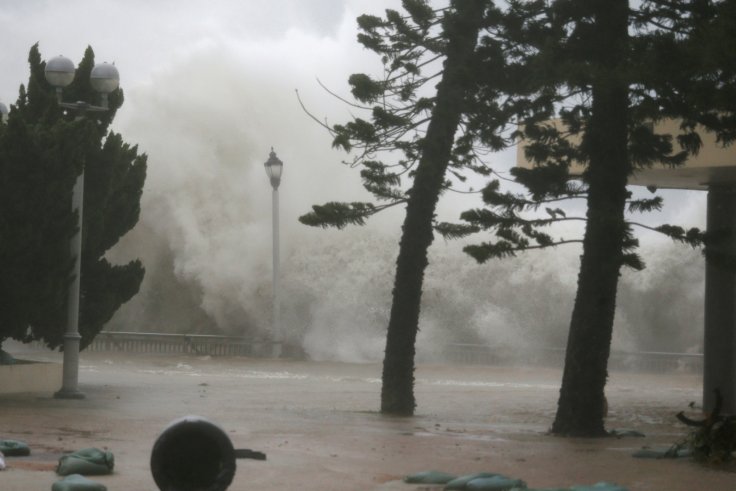
A super typhoon made landfall in China's Guangdong on Sunday, the country's most populous province, after wreaking havoc in Hong Kong and Macau and killing at least 29 people in the Philippines.
Packing gale force winds of more than 200 kph (125 mph), tropical cyclone Mangkhut is considered the strongest to hit the region this year, equivalent to a maximum Category 5 "intense hurricane" in the Atlantic.
The eye of Mangkhut, the Thai name for Southeast Asia's mangosteen fruit, skirted 100 km (62 miles) south of Hong Kong but the former British colony was still caught in the typhoon's swirling bands of rain and gale-force winds.
Hong Kong raised its highest No. 10 typhoon signal at mid-morning as ferocious winds uprooted trees and smashed windows in office and residential buildings, some of which swayed in the gusts, residents said.
"It stayed for quite a long time, at least two hours. It made me feel so dizzy," said Elaine Wong, who lives in a high-rise tower in Kowloon.
Water levels surged 3.5 m (12 ft) in some places, waves swamped roads and washed up live fish, washing into some residential blocks and a mall in an eastern district.
"It's the worst I've seen," resident Martin Wong told Reuters. "I've not seen the roads flood like this, (and) the windows shake like this, before."
The plans of tens of thousands of travellers were disrupted by flight cancellations at Hong Kong's international airport, a major regional hub. Airlines such as flagship carrier Cathay Pacific cancelled many flights last week.
Philippine authorities said a baby and a toddler were among the 29 dead, most of them in landslides in mountainous areas that left at least 13 missing.
"The landslides happened as some residents returned to their homes after the typhoon," disaster response coordinator Francis Tolentino told DZMM Radio, adding that most of the 5.7 million people affected had made advance preparations.
"It was not so severe as we expected it to be because earlier it was noted it would also be strong," said President Rodrigo Duterte, following an aerial survey of some affected areas.
In Macau, which halted casino gambling late on Saturday and put China's People's Liberation Army on standby for disaster relief help, some streets were flooded.
"The suspension is for the safety of casino employees, visitors to the city, and residents," said authorities in the world's largest gambling hub, who faced criticism last year after a typhoon that killed nine and caused severe damage.
China has ordered thousands of boats to return to harbour, and evacuated thousands of offshore oil platform workers, the state news agency, Xinhua, said.
"KING OF STORMS"
The typhoon dubbed the "King of Storms" by Chinese media, made landfall in Haiyan town at 5:00 p.m. local time, packing winds of more than 160 kph (100 mph), weather officials said.
Ports, oil refineries and industrial plants in the area have been shut. Power to some areas was also reduced as a precaution. In Shenzhen, electricity supply to more than 130,000 homes was cut at one point on Sunday.
The storm has fueled concern about sugar production in Guangdong, which accounts for a tenth of national output, at about 1 million tonnes. China sugar futures rose last week on fears for the cane crop.
Guangdong is also China's most populous province, with a population of more than 100 million.
The airport in the boomtown of Shenzhen has been shut since midnight and will be closed until 8:00 a.m. (2400 GMT) on Monday. Flights have been cancelled in Guangzhou and the neighbouring island province of Hainan.
High winds and swells have also hit Fujian province north of Guangdong, shutting ports, suspending ferry services and cancelling more than 100 flights. Waves as high as 7.3 meters (24 ft) were sighted in the Taiwan Strait, Xinhua said.
Mongkut's northwesterly track will bring heavy rain and winds to the autonomous region of Guangxi early on Monday before it weakens into a tropical depression to reach southwestern Yunnan next day.









